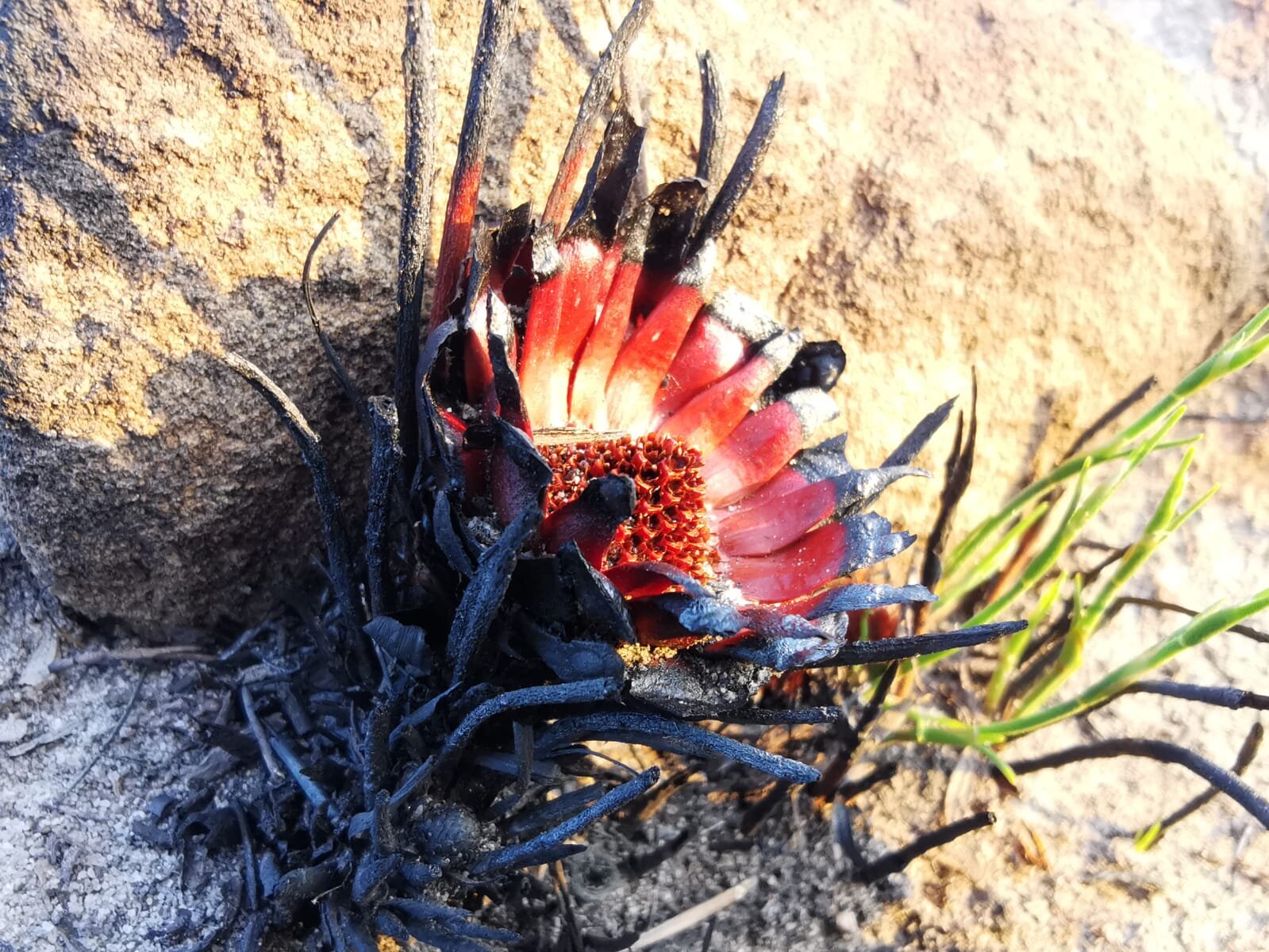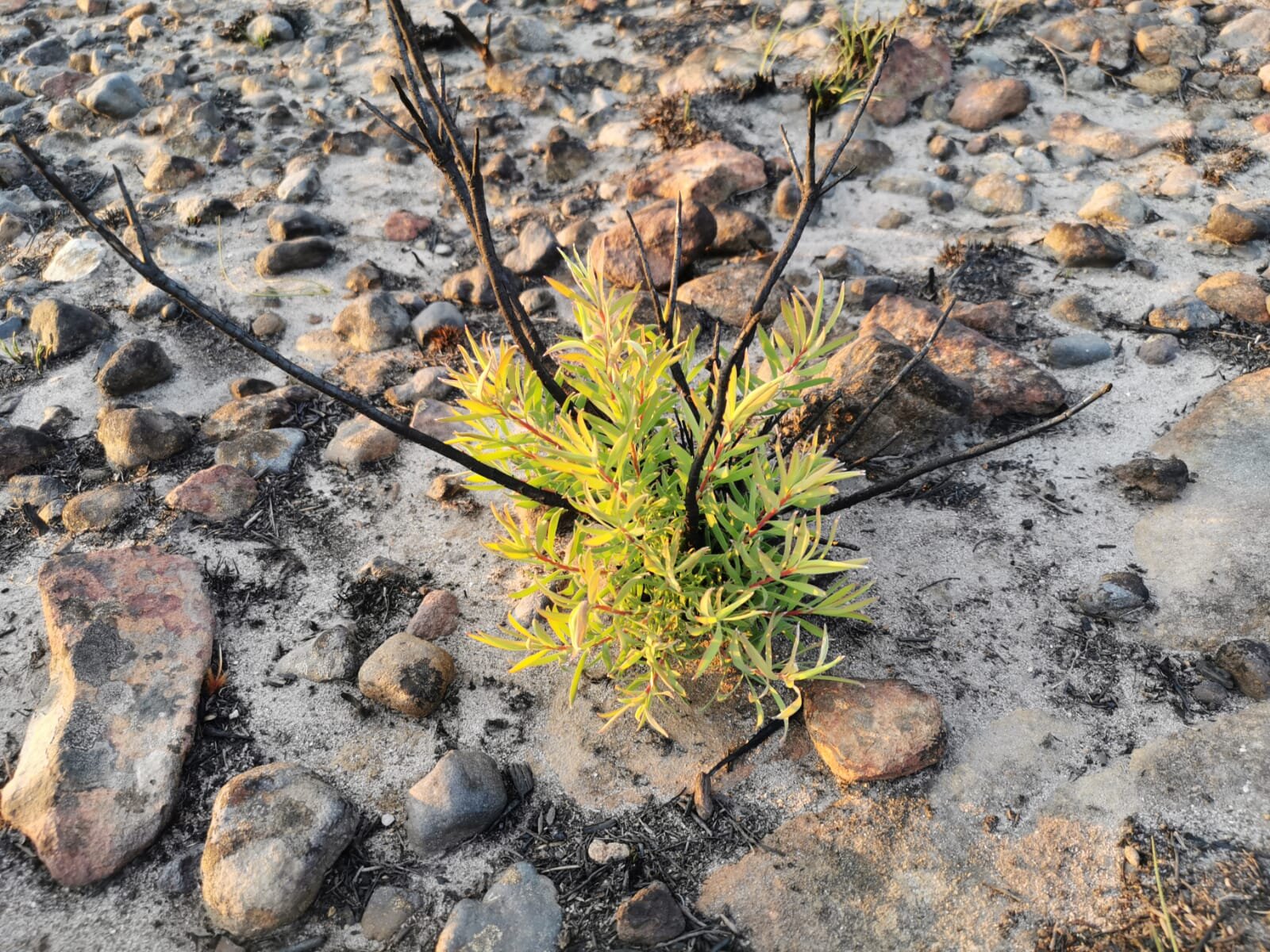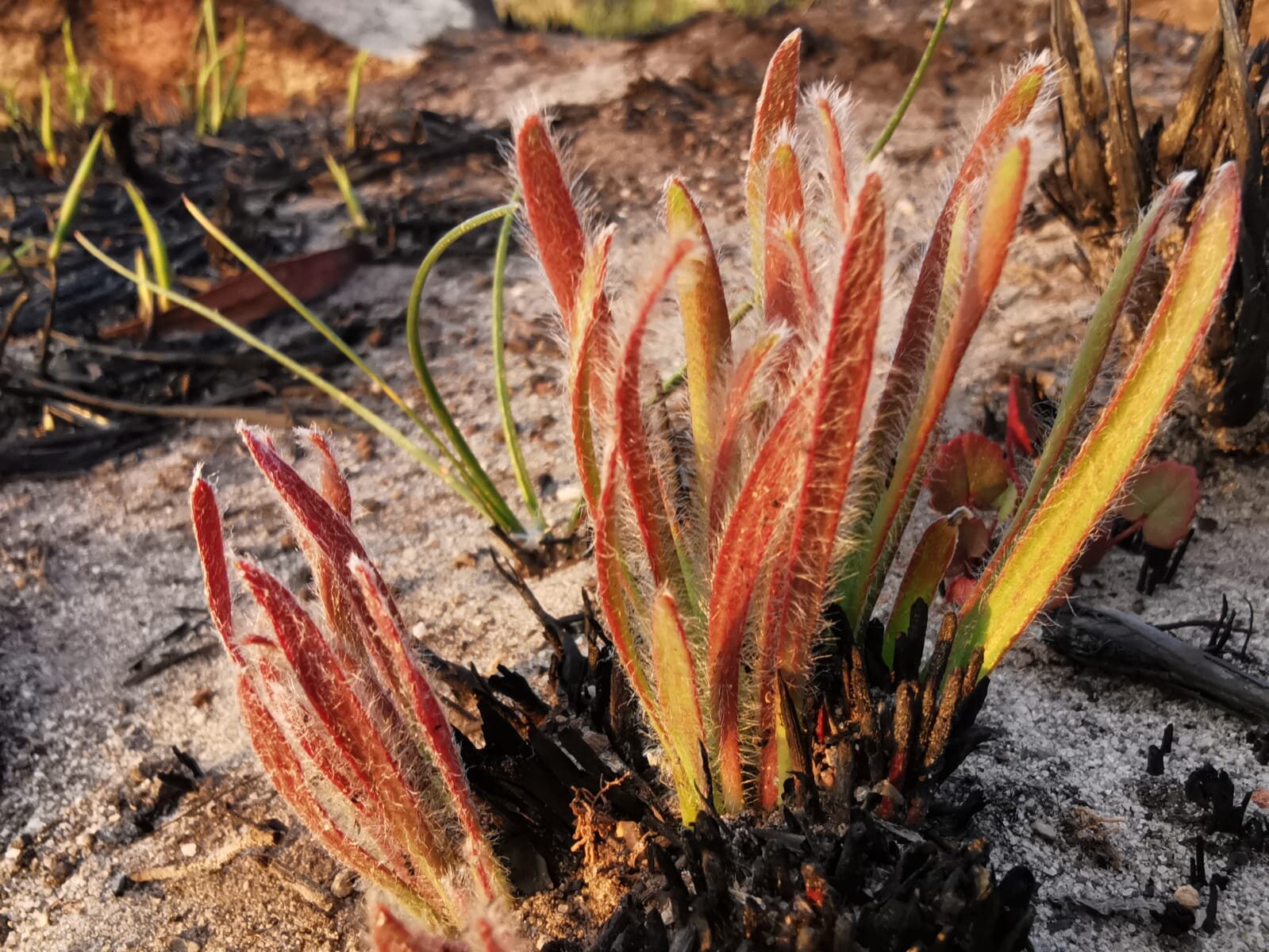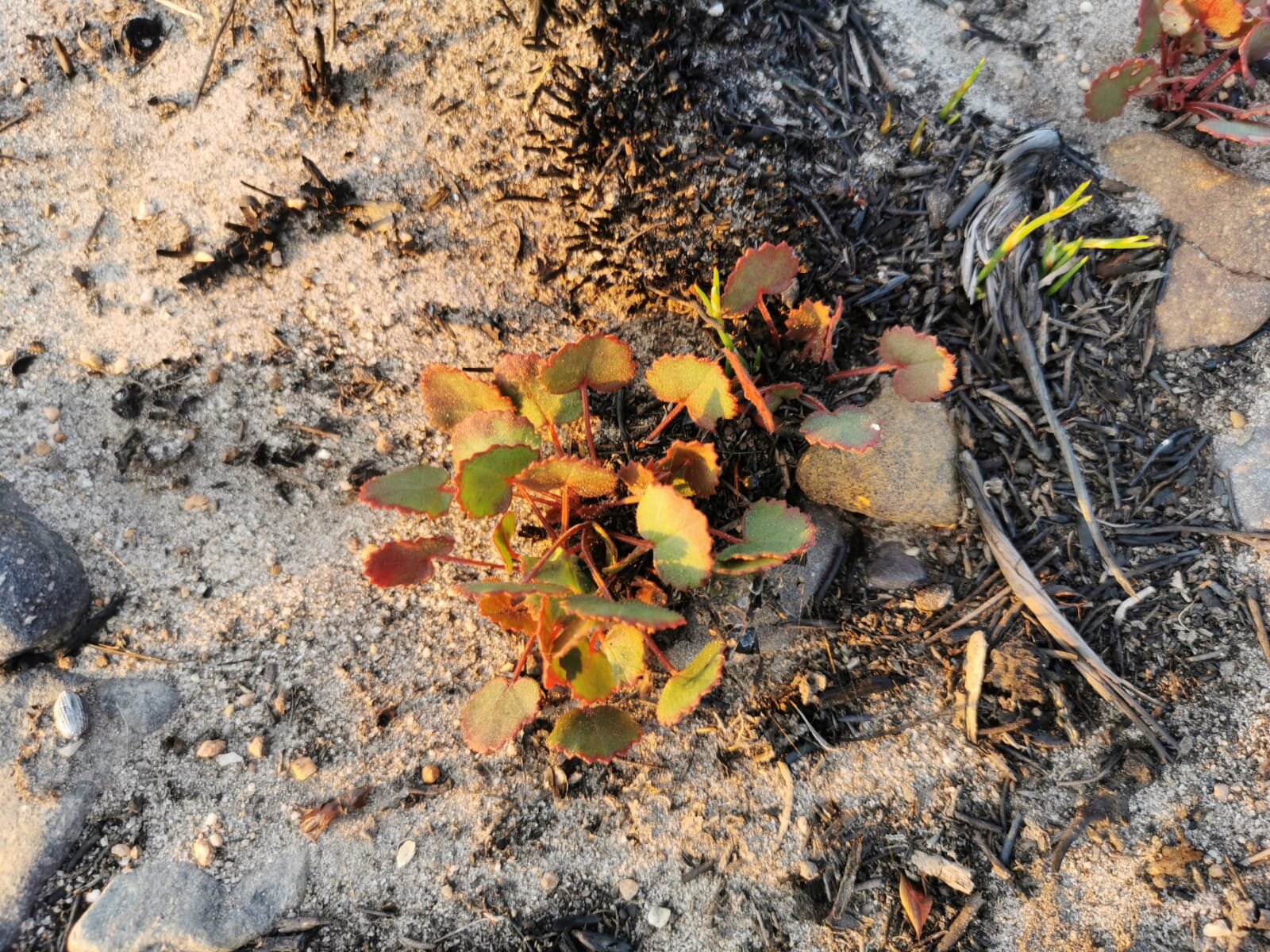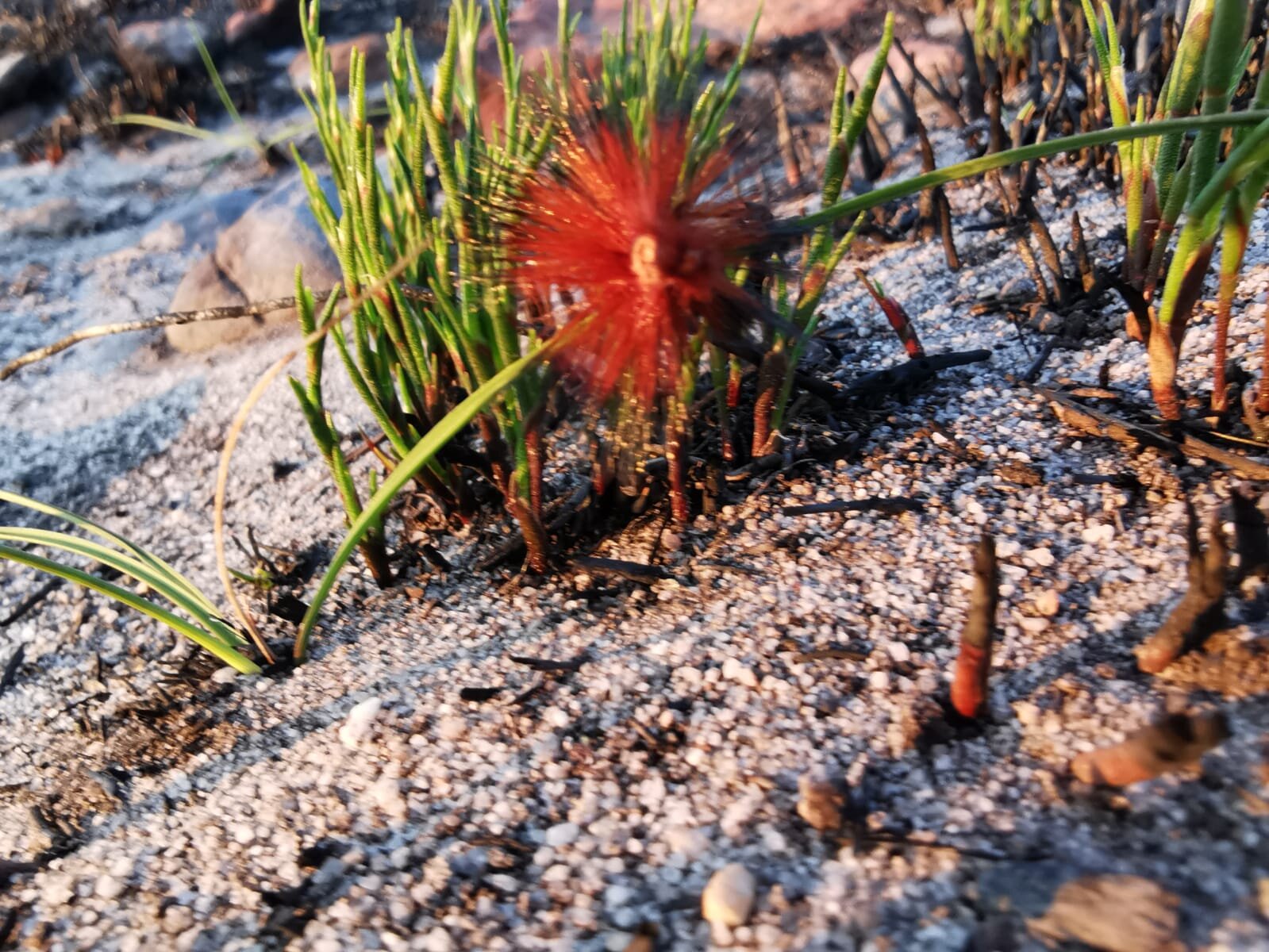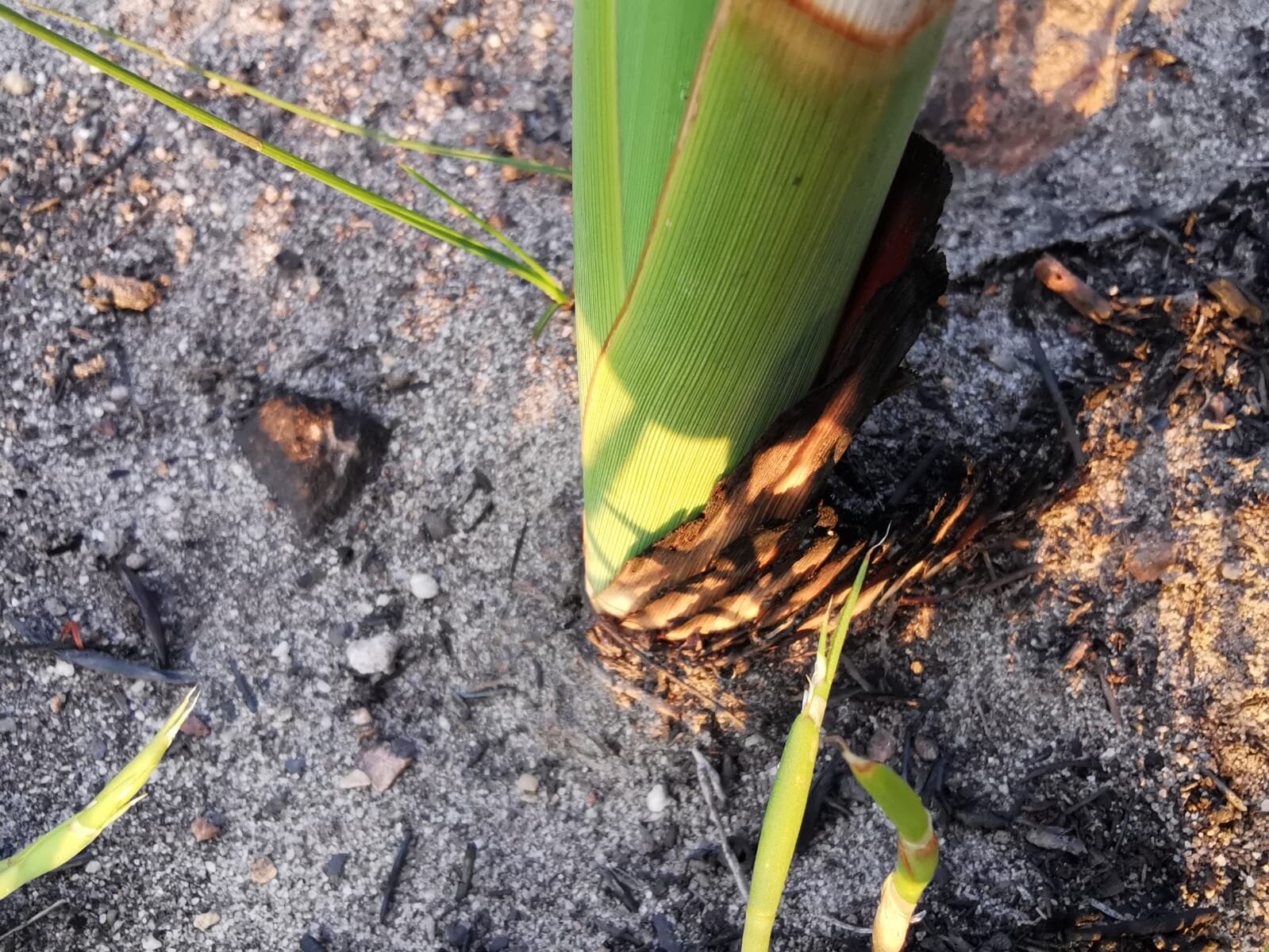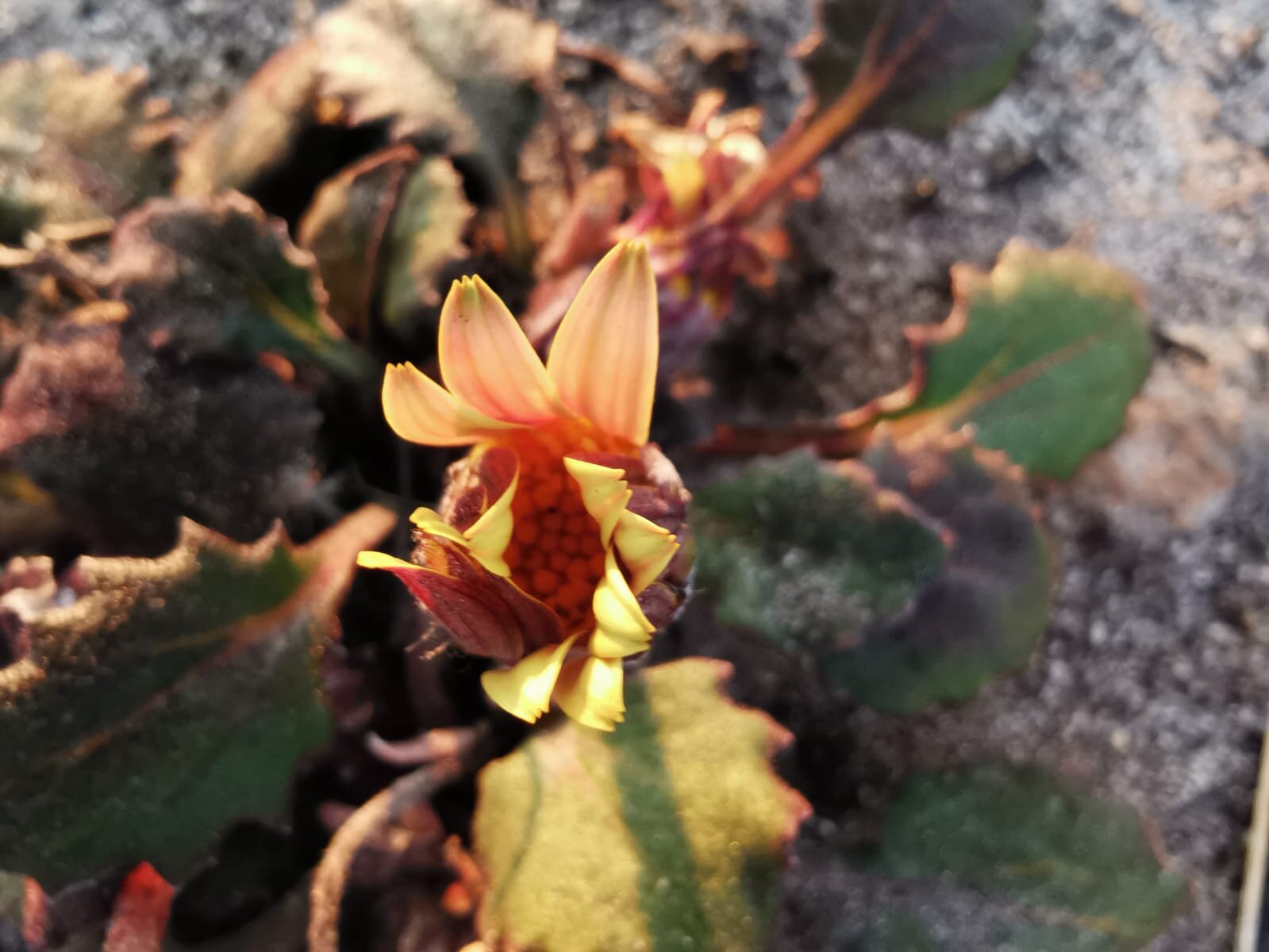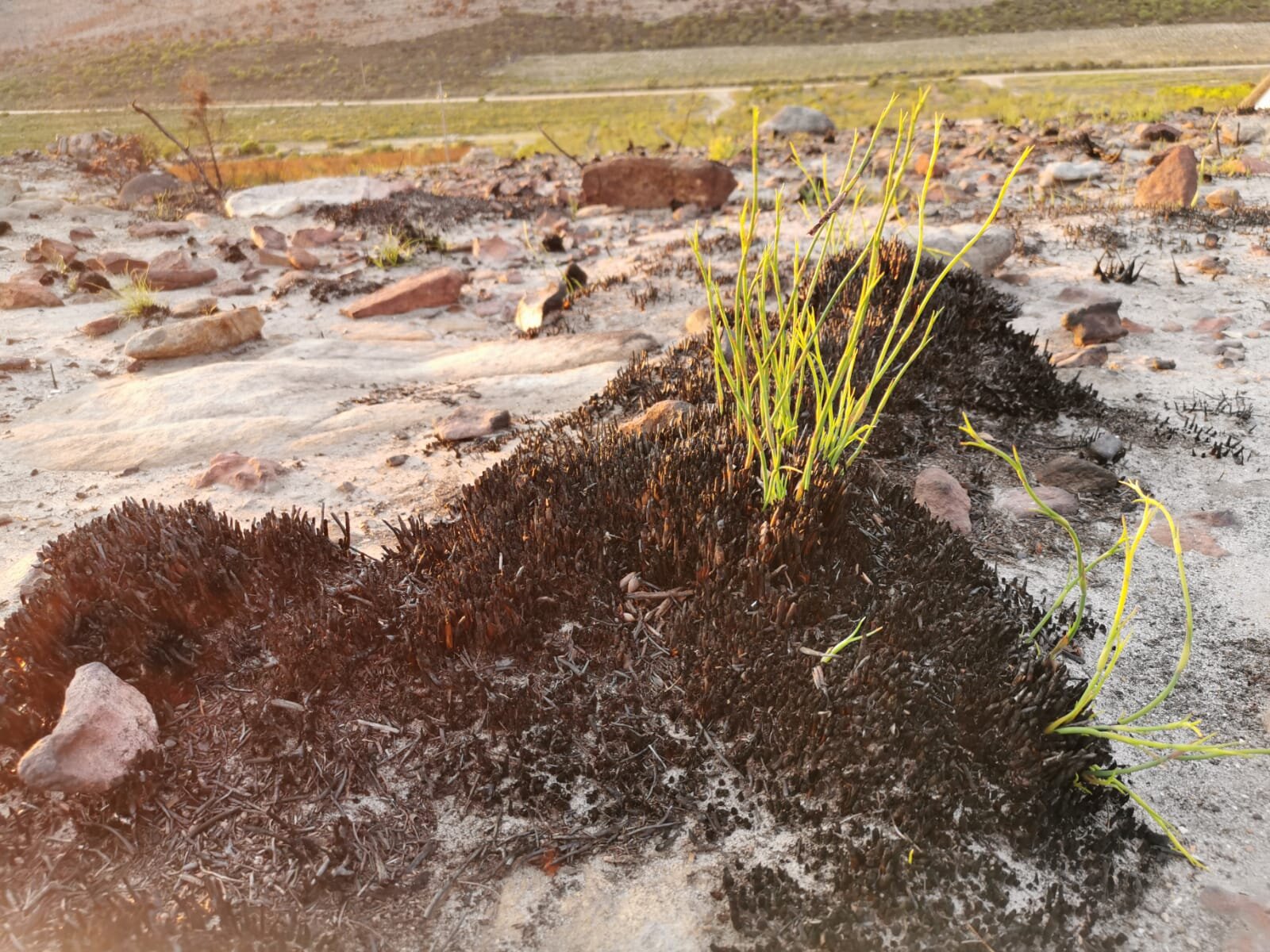Fire and Fynbos
The Fynbos has evolved over millions of years in the presence of fire and through natural selection has developed numerous strategies to persist in this winter rainfall, nutrient poor environment. One of these strategies is serotiny, the retention of seed in the flower head which is only released on death of the plant, usually as a result of fire. These seeds then give rise to the next generation. This is found in several of the proteas such as the sugarbush, Protea repens, however others such as the King Protea, Protea cynaroides, resprout after fire.
So although the Fynbos has evolved mechanisms to survive fire, this should not happen too frequent, 10 to 15 years generally but in arid areas the appropriate interval can be as much as 30 years. This is to allow the slow maturing, reseeding species of protea in particular, to have flowered several times in order to produce enough seed to ensure the next generation.
Too frequent and fires cause the decline in species that have the reseeding strategy for persistence. It also results in a predominance of re-sprouting species.
The season of the fire is also important and should, from an ecological point of view, be towards the end of summer and before the first "winter" rains. One of the many reasons is so that the released seeds are not exposed to seed "predation" by birds, rodents etc for too long.
A relatively recent problem that has complicated this system is the invasion of many Fynbos areas by invasive alien plants. These are generally large woody trees that grow very much more quickly and become larger than the local indigenous vegetation and radically alter the fuel load. This results in fires that are much hotter than would be the case normally. This has a severely negative impact in the indigenous biota which has not evolved with this heat intensity. It also on occasions alters the physical properties of the soil which can lead to accelerated erosion.
After the tragic fire at Boesmanskloof



